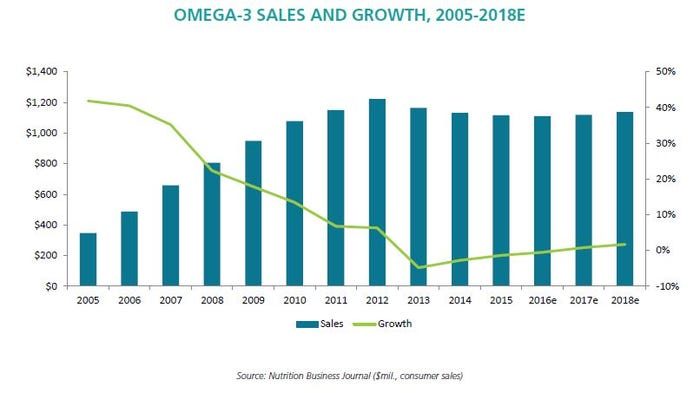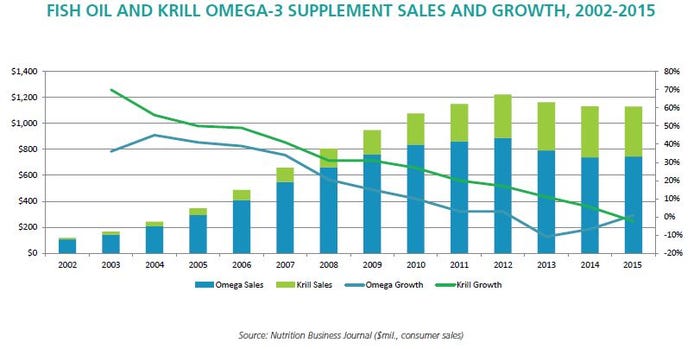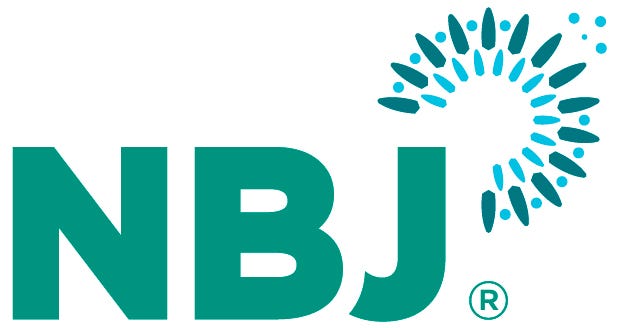
Extraction by putrefaction has a certain ring to it. A ring that will have older consumers recalling the gagging flavor of their grandmother’s cod liver oil. Allowing vats of discarded cod livers to rot and thereby separate from their fat, however, was the primary process for cod liver oil production for centuries.
The method was largely discarded as more sophisticated extraction methods were introduced in the mid-1900s. Today, fish oils are highly concentrated, near flavorless and often presented in emulsions that include smoothie-ready fruit flavors.
Visiting Norway earlier this year, I experienced an omega-complex oil whose flavor profile conjured anything but putrefied fish. Around a meeting table in Pharma Marine’s facility near the idyllic city of Alesund, Norway, chef Mindor Klauset prepared tapenade, guacamole, pesto and other recipes, featuring a prototypical fish oil product that is uniquely poised to get omegas out of soft gels and expand the functional foods realm beyond smoothies. Pharma Marine is a leading manufacturer of fish oil products in Norway’s Møre region.
But the story I saw in Norway didn’t end at tastier fish oils, and it wasn’t just new formats and flavors. The story of innovation in Norway isn’t as much about new products as it is about getting the most nutrition with the least impact.
Sustainable, Norway style
The northwestern coast of Norway is a collection of verdant, mountainous, finger-like peninsulas that elongate the miles of coastline to a distance greater than the length of the equator. Marine areas seven times the Nation’s land mass are home to 200 different species of fish and shellfish. Proximity to the Norwegian Sea and the Barents Sea gives Norwegian fishermen easy access to large shoals. The Norwegian Seafood Federation claims the country is responsible for some 21 million meals served in over 100 countries each day.
The fjords, or waterways between the peninsulas, are home to one of the oldest fishing cultures in the world. Stone-age depictions suggest Vikings have fished these waters for millennia. This history and economic dependency on the catch may be responsible for Norway’s position as a global leader in sustainably harvested seafood, with over 70 percent of their fisheries certified by the Marine Stewardship Council.

Sustainable fisheries start and end with the management of fish stocks—something carefully dictated by the U.N. and calling on extensive cooperation between the multiple nations sharing the waters. Universities and research organizations consistently rank Norway as the most responsible country for fisheries management, says Dr. Manfred Klinkhardt, a Hamburg, Germany-based biologist and author specializing in fisheries, aquaculture and fish processing. “First place, in front of USA, Canada, Australia and Iceland,” Klinkhardt notes.
One reason for the high ranking, Klinkhardt continues, “is Norway’s ecosystem approach in its fisheries management.” Past approaches managed fish stocks as individual species. “This method has shortcomings because it does not sufficiently take into account interaction between the species and the influence of environmental factors,” says Klinkhardt. “Today, Norway’s fisheries management tries to observe the consequences of fishing on the entire ecosystem.” Under such management, harvests increase and stocks grow, inviting even more opportunity from the sea.
This focus carries over into the manufacture of dietary supplements. “Norway has a culture of doing things right,” says Todd Parker, VP of sales at Marine Ingredients, another top manufacturer of omega-3 fatty acids, also in the Møre region. “There is no cutting of corners here. Norwegian industry is heavily regulated so quality assurance, product safety, employee rights, and the environmental protection are all enforced and adhered to.”
A refined history
The history of cod liver oil in Norway is nearly as long as that of fishing, also dating back to the Vikings who consumed the oil as part of their diet and traded it around the Baltic region as lamp oil. “The evolution of production methods started with separating the oil by little more than putrefaction,” says Parker, “followed by steam extraction, then more modern rendering methods. Presently, nearly all of the cod liver oil available on the market is distilled, winterized, deodorized and bleached.”
The bleaching is a process of organic filtration via the temporary addition of clay to the oil. “That will absorb some color components and purify the oils,” says Leif Gjendemsjø, executive chairman of Pharma Marine. “But most of the time you do this you will also remove some of the vitamins. Vitamin A and D especially.” Therefore, Gjendemsjø says, “you have to add vitamins back into the product.” It’s a tradeoff in order to reduce odors and taste.
Other procedures, like winterization, that brings the oil to a desirable consistency by removing the congealed layer that appears at low temperatures, and deodorization also address the aesthetics of the finished product.
The high refinement process isn’t just about taste, however. “Something you didn’t have 100 years ago was contaminants,” says Gjendemsjø. “We are polluting every day, and unfortunately many of these contaminants go into the ocean and into the food chain and fish are eating it and it’s accumulated. I would say most fish will contain contaminants and many of them are fat soluble. It’s very important to remove these.” Molecular distillation, used in marketable oils since the late 1980s, does just that.
Still, Gjendemsjø clarifies, “the main reason for distillation is to separate fatty acids … to increase the amount of EPA/DHA.” And it’s exactly these clean, highly concentrated oils that make possible the oil’s move out of the capsule and into smoothies and eventually the dinner table in the form of salad-grade oils like those I sampled in Norway.
While no product is currently on the market, the dishes shared by chef Klauset in the Pharma Marine meeting room foretell an exciting culinary future for fish oils. The oils we sampled consisted of double-concentrated fish oil that was then cut with herb-infused olive oil, the latter producing the dominant flavor profile. These oils thereby had amounts of EPA/DHA typical to fish oils, but with the palatability of extra virgin olive oil—tasty enough to be taken plain or drizzled on a baguette.
Shelf stability, affecting storage time and temperature of oils, may pose a marketing challenge in the release of oils like these, but the challenge is likely worthwhile, given the possibility to broaden the omega-3 market and open avenues of functional foods deployment of the oils.
Over at Marine Ingredients, Parker confirms the expected continued rise of highly concentrated oils but also identifies an opposite trend toward more natural, minimally processed ingredients. “The Paleo Diet movement is one example of this trend,” Parker says. “For this group of consumers the pendulum may be swinging back to offerings such as natural cod liver oil. Marine Ingredients presently offers cod oil sourced from Alaska that maintains naturally formed vitamins D and A and intrinsic omega-3 fatty acid levels.”
Fish flavor has its place
The intersection of food and fortified function is growing across food segments, and the seafood industry has cast its net for market share, too. Firmenich, a global flavor and fragrance company, committed to sustainability and innovation, acquired the Norwegian company Bjørge Biomarine in 2002, and has since expanded their development of seafood-based flavorings (think: powdered cod for soup broths). The company is also active in developing flavorings for snacks and beverages that help reduce salt and sugar intake.

The first flavor house to obtain MSC certification for its seafood ingredients, Firmenich sees health and sustainability as key stimulators for innovation. Their development of new marine ingredients is driven both by the efficiencies of increased utilization during processing and by the broader goals of meeting the protein needs of a growing population in a way that is affordable, healthy and good for the environment.
In such, the company is working on solutions to extract more nutritional and health value from bio-marine sources. It is well positioned to do this, too, as the company processes 10,000 tons of seafood each year at its Norway location. “We are a flavor house, but now look to leverage our knowledge, resources and expertise to develop specific solutions in the area of dietary nutrition,” says Nicoletta Beatrice, Director Commercialization, Health & Nutrition. One of these opportunities is in the development of marine peptides, or marine protein hydrolysates. While they are not yet commercially available, these protein hydrolysates will be produced from the high quality muscle protein of MSC-certified Atlantic cod—a side-stream of the traditional filleting process.
The company has not disclosed when and how these ingredients will hit the market, but in their Norway facility’s tasting lab I sampled a beverage infused with marine peptides, and chips imbued with a mild and pleasant seafood flavor. It seems that marine-boosted protein snacks and energy drinks could be an emerging market for hydrolysates.
With every new product or production tweak, the Norwegians are proving that innovation can drive growth while also preserving the resource that makes both possible.
Seas the day
Meeting the dietary needs of a growing population is an opportunity for the entire marine industry—especially one with an eye on sustainability. At least that’s how Norway’s biomarine industry sees it. A growing sector there is seizing that opportunity, not just through sustainable fisheries but through increased utilization and ocean farming.
“Aquaculture in Norway is equal to fishing,” says Klinkhardt, “and it is mostly focused on salmonids.” As a result, Norway is the world’s largest producer of salmon. “Norway is driving the development of aquaculture with great professionalism; all areas are constantly being developed.” Few countries have such modern and efficient fish farming technologies, he continues, with a strict legal framework for aquaculture, “so that their economic, environmental and social responsibilities are met.”
Viewing sustainability beyond just environmental responsibility is not to be ignored, Klinkhardt continues. “An intact environment alone cannot be a desirable objective if people go hungry … Real sustainability is only possible in a balanced coexistence of natural, human and economic concerns.”
Macroalgae is another area for the development of marine nutrients, and Norwegian organizations are developing this beyond kelp. These sea farms boast low input, nutrient-rich systems that are carbon sinks. More superfood supplements and dietary opportunities are likely to emerge as this industry grows.
Then comes utilization. “When we are harvesting from nature we have to utilize 100% of what we are harvesting,” Gjendemsjø says. “We cannot only take the fish and make a fillet and throw the rest back to the sea.” Fewer scraps overboard means more raw materials for the ever-broadening ingredient formats—which brings us back to fish oils. “Norway has a very long tradition in utilizing trimmings,” says Gjendemsjø, whose company currently makes Calamarine and Lipidmarine, utilizing fats from squid byproduct and a variety of fish, in addition to their core Codmarine line, meeting the needs of a dynamic market in addition to addressing sustainability concerns.
“I would say that the fish oil market is bifurcated,” Parker says. “For one group of consumers, price is everything. Conversely, there is a large and growing group of consumers who are highly quality oriented, especially the younger consumers. This group is interested in attributes such as country of origin, sustainable sourcing, and supply chain transparency. So for companies targeting higher end consumers there is more information that needs to be brought into the selling proposition, which can help to differentiate the product but also requires extra effort and due diligence.”
“Traceability is becoming more and more important, and consumers want to know where the materials are coming from,” Gjendemsjø agrees. The bottom line, he believes, is that transparent sustainable practices will only become more important in the marketplace. “That we really are managing our fisheries and our ocean biomass in a sustainable and good way,” he says, will be a driving force. At least for Norway.
More products, more nutrition, more hungry people and a limited marine resource protected like no other: in a world of supply chains stretched to the breaking point, Norwegians are proving that the right ideas, executed the right way, can hold the equation together.
From Nutrition Business Journal's 2016 Supply Chain Issue. For the full issue, including extensive market data and state of the industry analysis, call subscription services at 303-998-9536.
About the Author
You May Also Like





